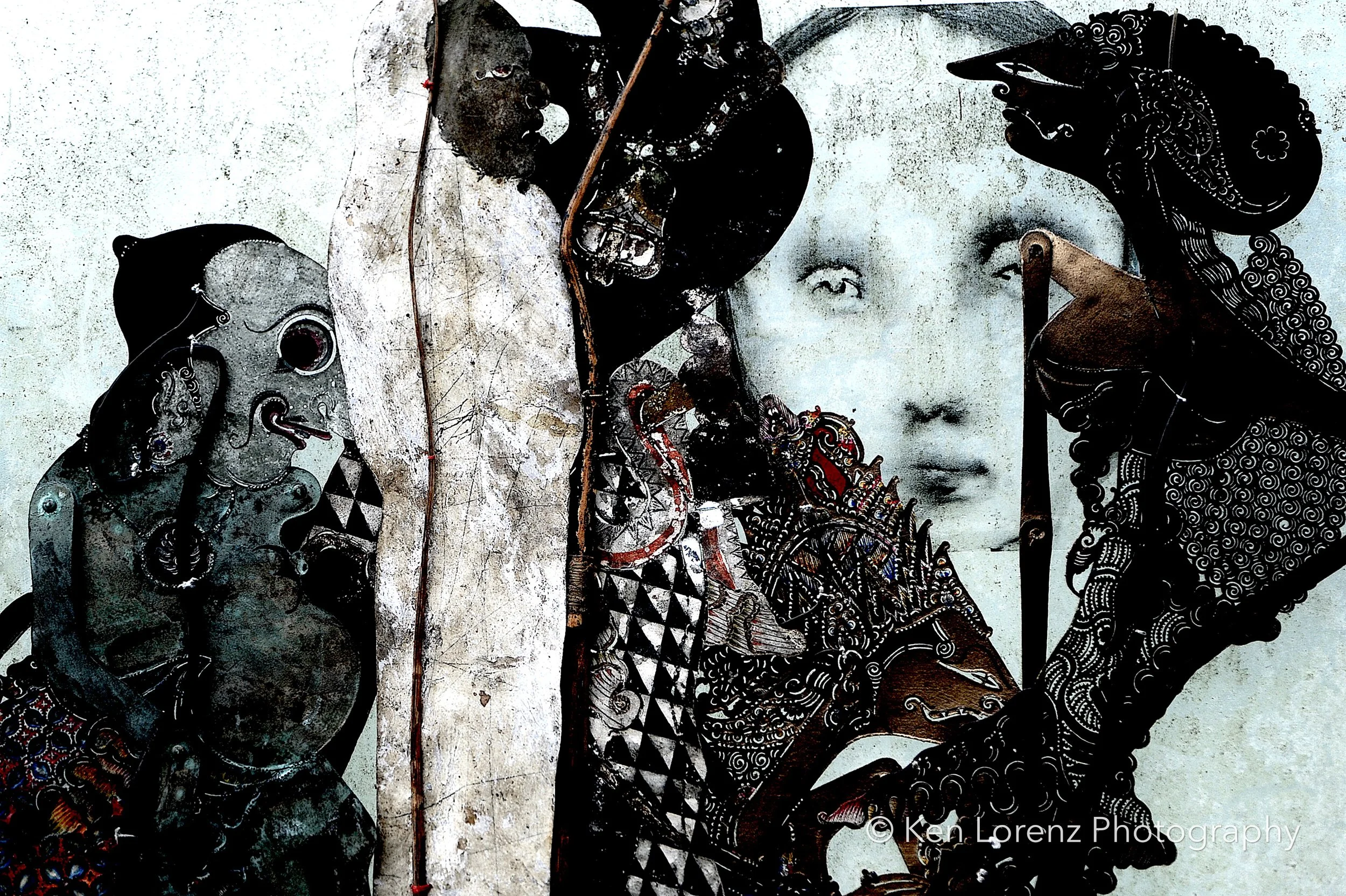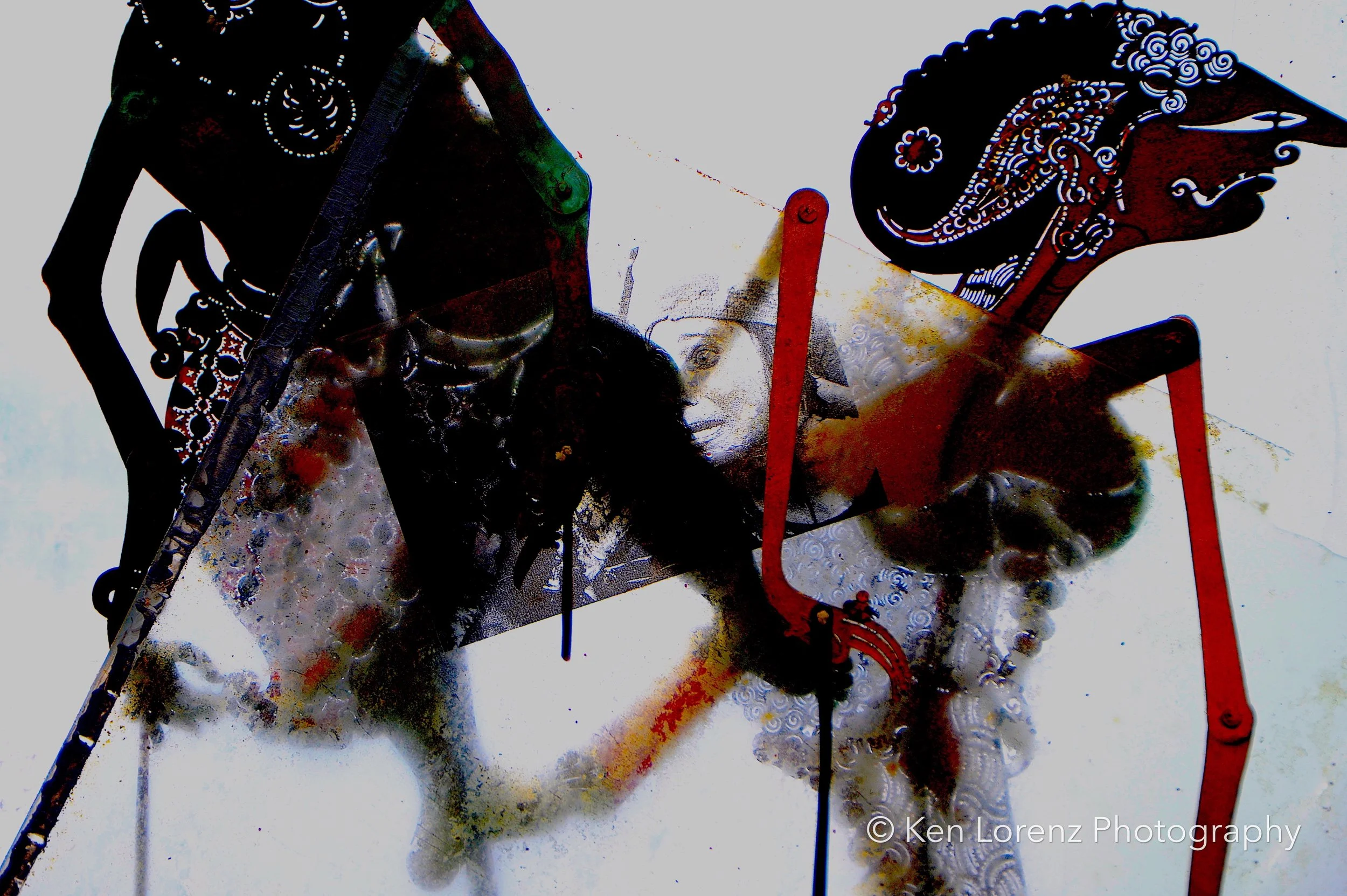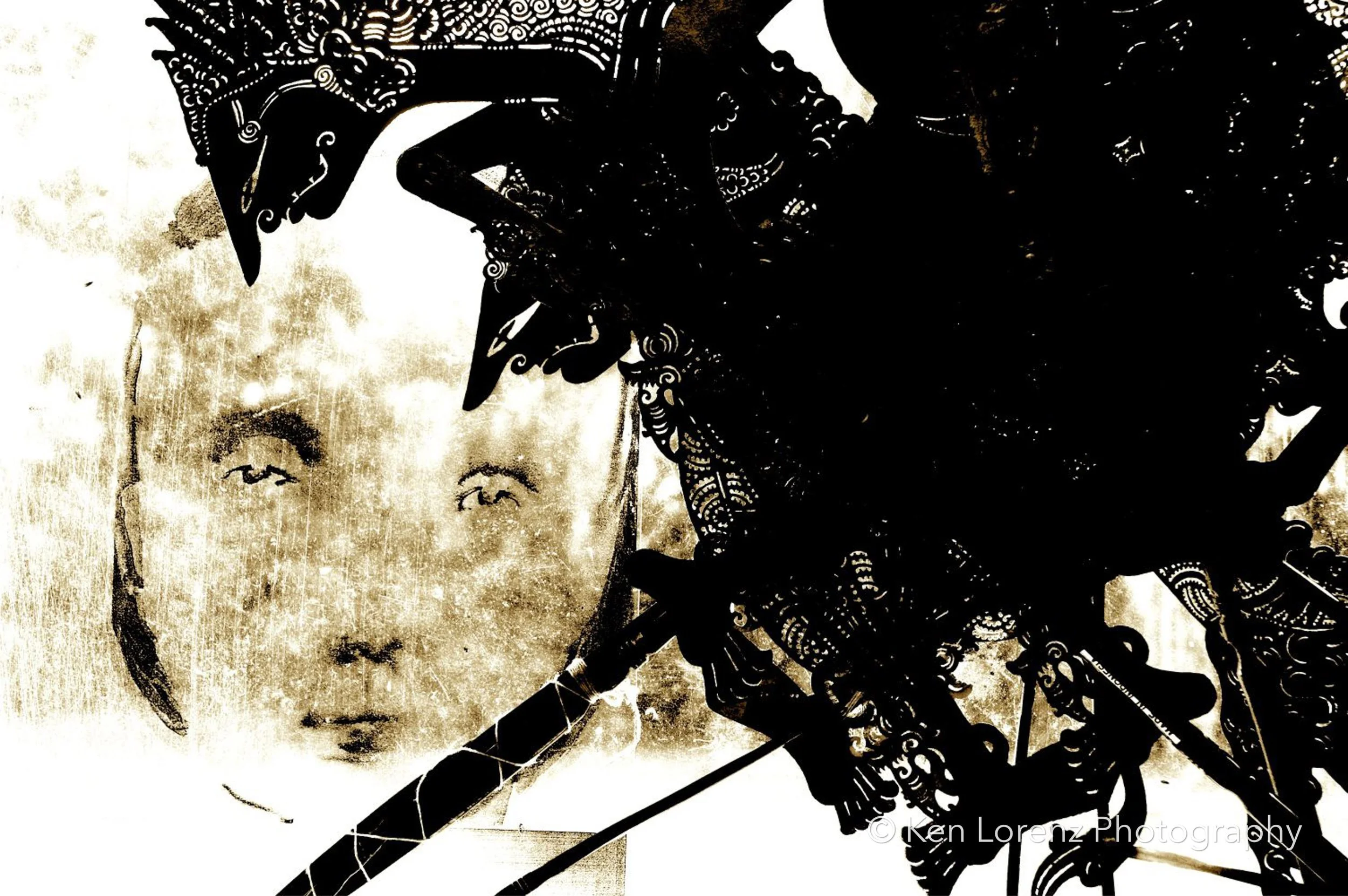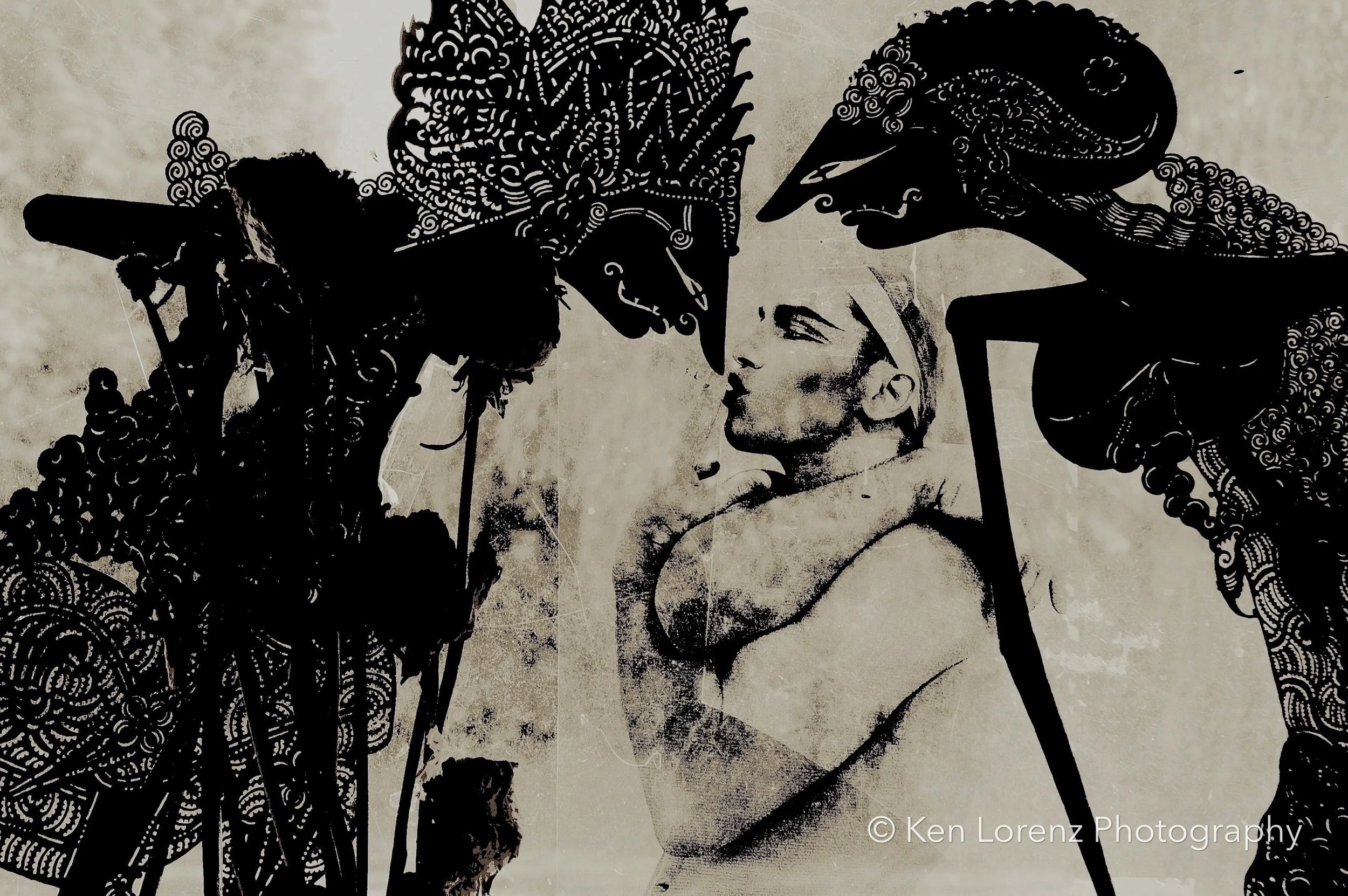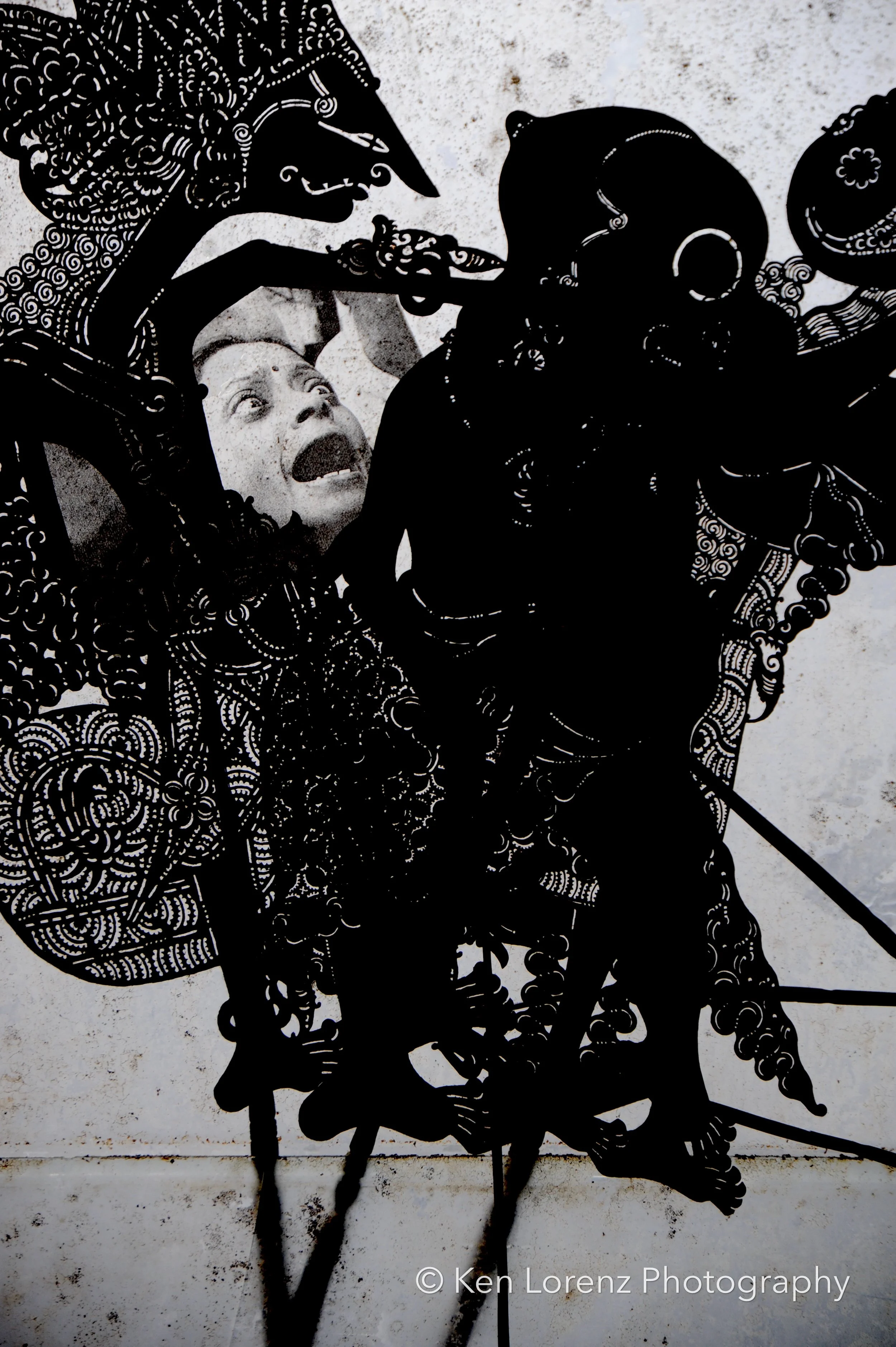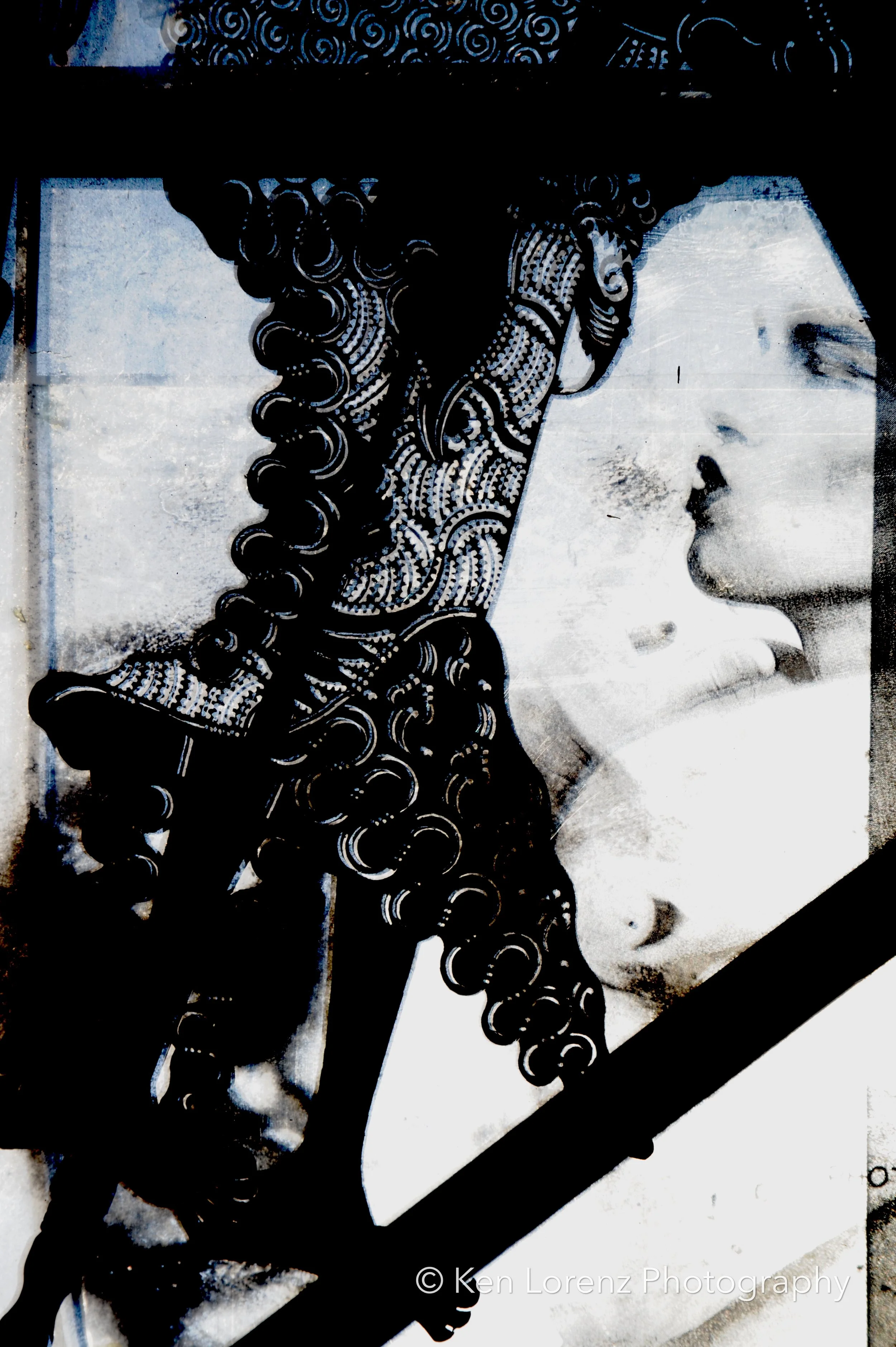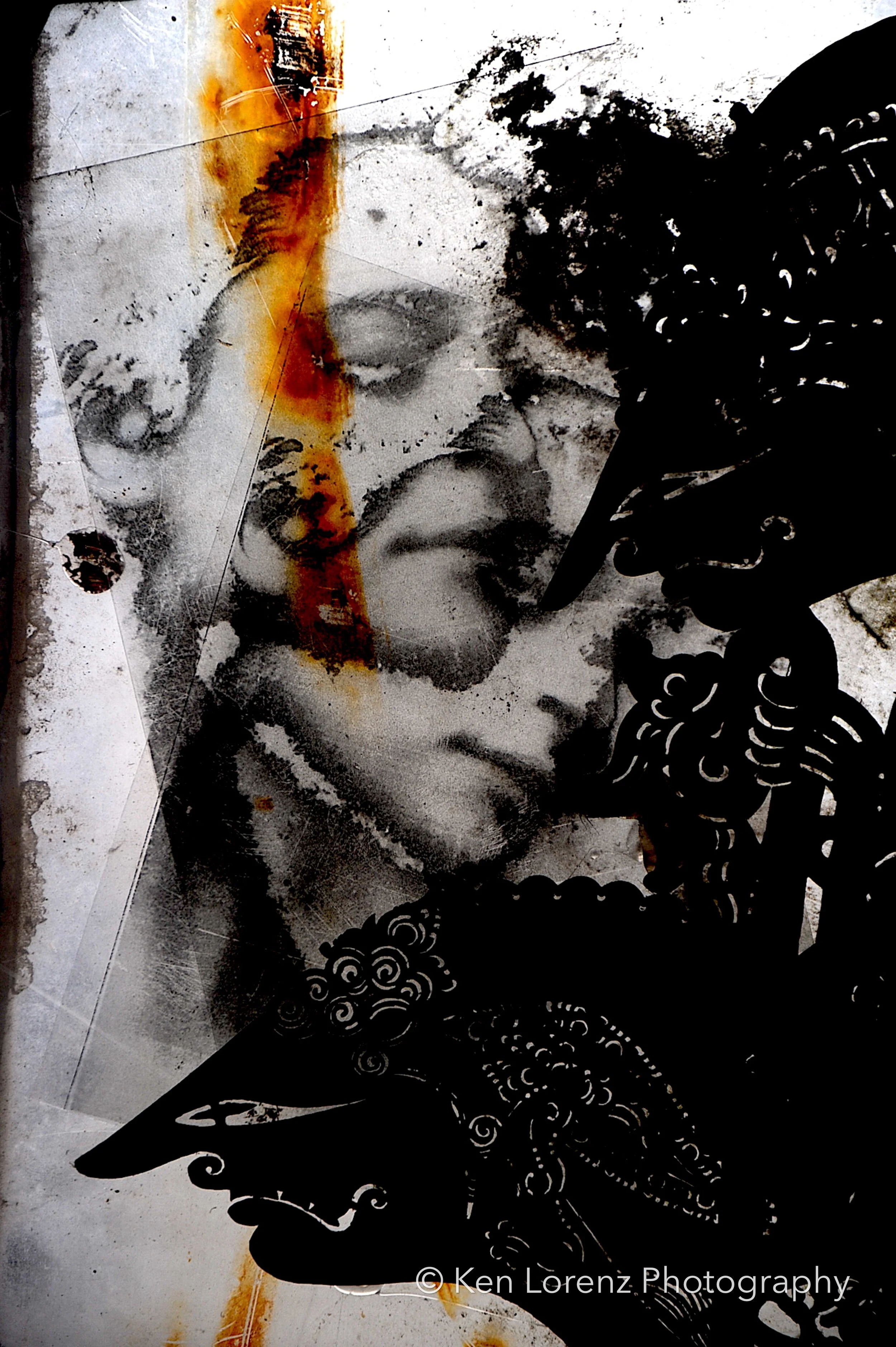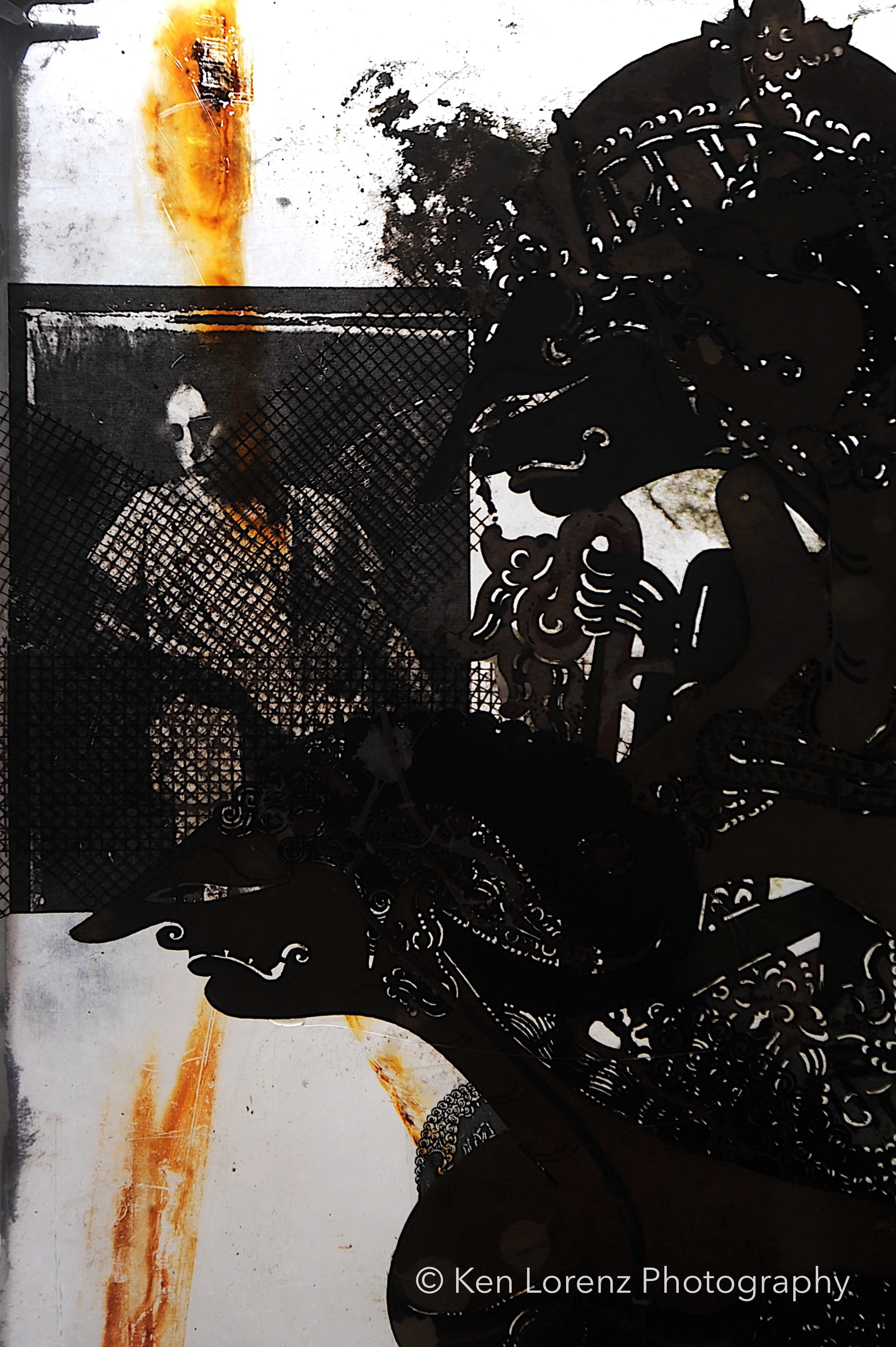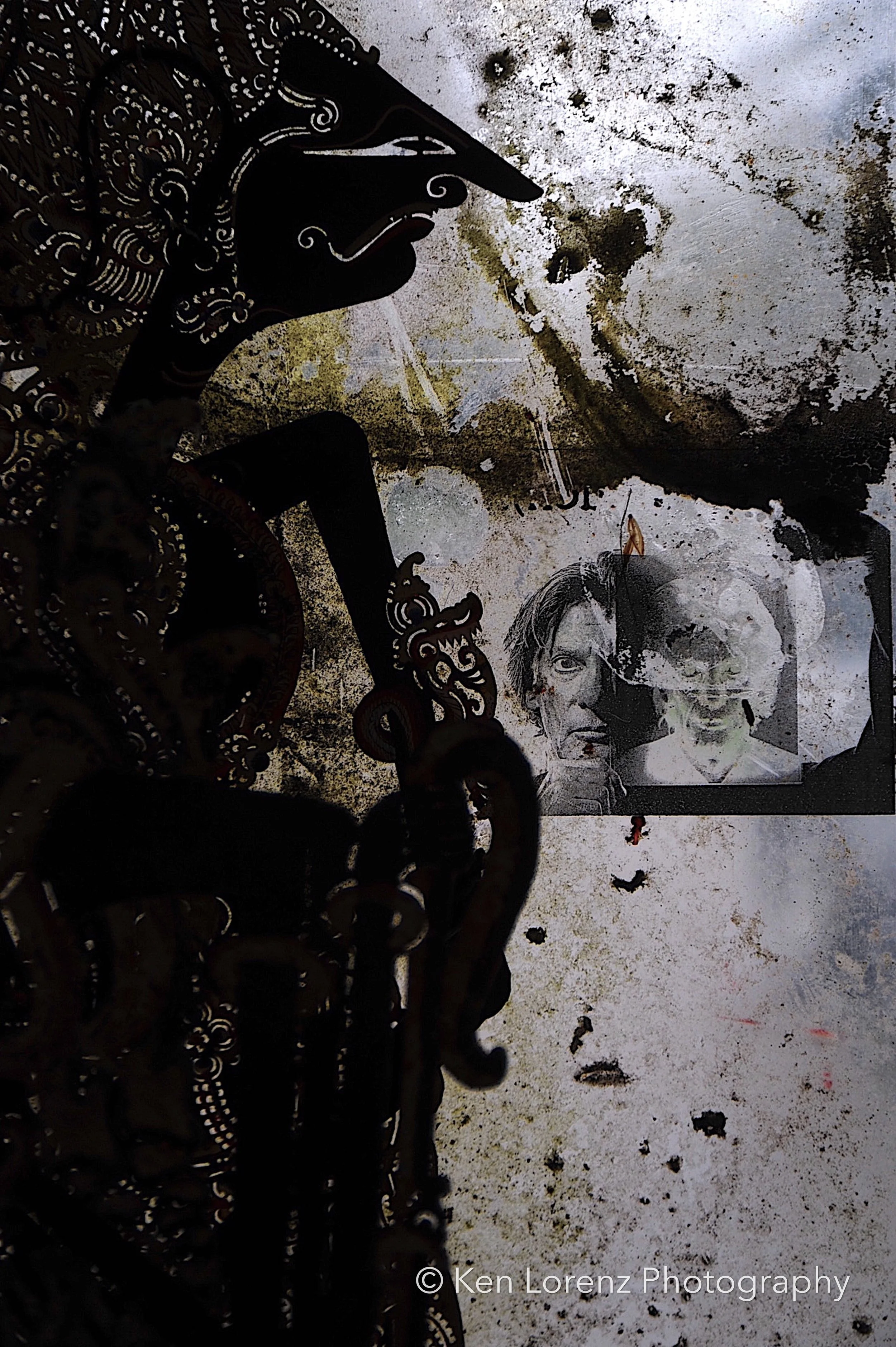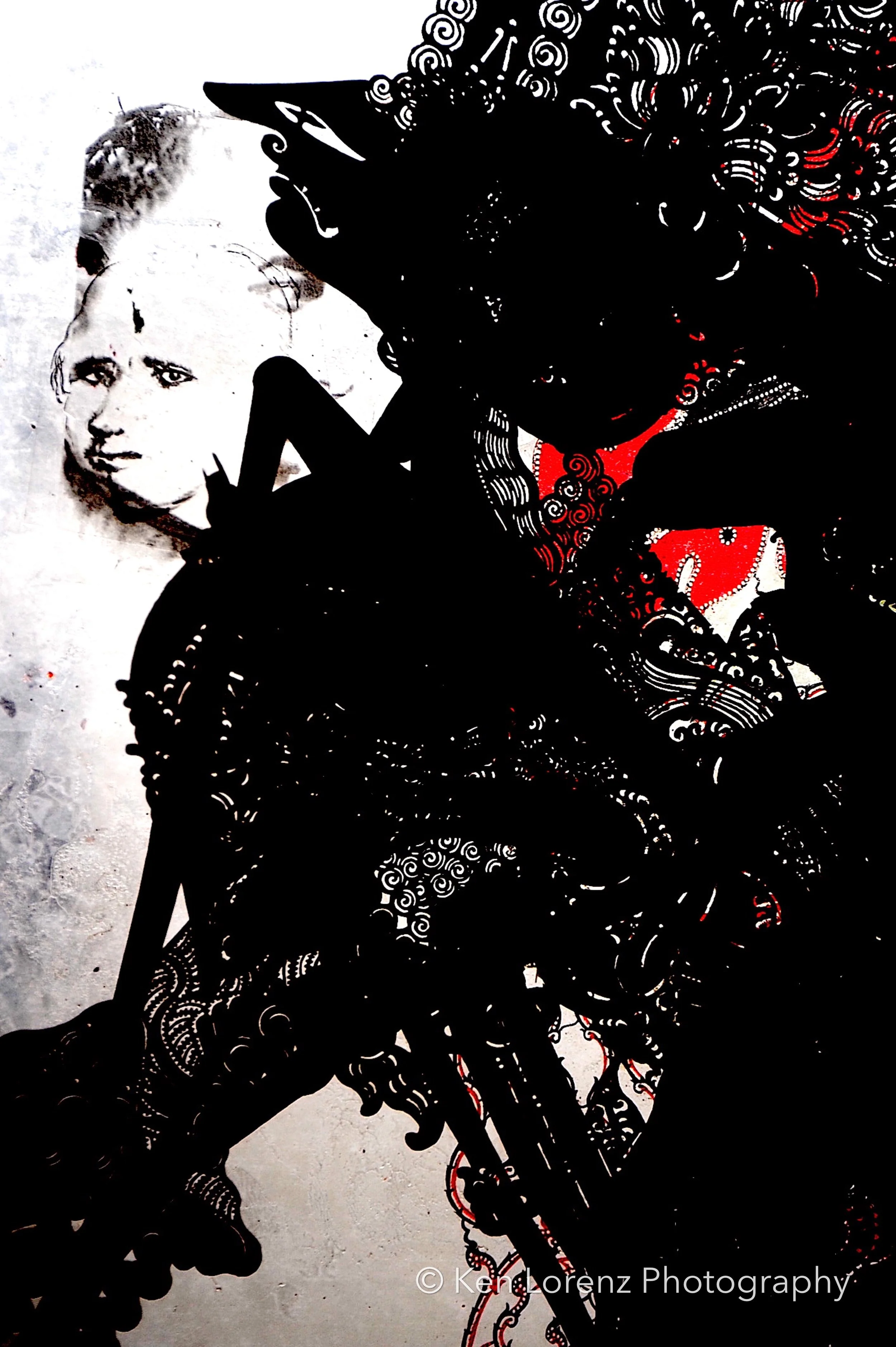In the shadow of puppets
Sub text: Wayang confronts Western Intruder; Wayang invites Western Intruder To Join Space;
Color Digital prints
10 of 37 in portfolio. Image sizes range from 11X14, to 16X20 and some 20X24 triptychs
The Wayang shadow puppet has traveled a long path of cultural evolution — a journey that continues to reinvent itself. It was this ever-evolving quality that first captivated me. Wayang is the Indonesian word for “theatre” or “shadow,” and Wayang Kulit refers to a traditional performance art that brings stories to life using intricately carved puppets, projected shadows, and the drama of light and darkness.
As a photographer who has worked with light and shadow for over forty years, I was drawn to Wayang instantly. During my travels through Indonesia, I encountered these shadow plays and was fascinated by the visual poetry they created. The aesthetic discipline required to construct the puppets is meticulous, almost sacred. That same precision — delicate, expressive, and symbolic — became the foundation I sought to explore and reconstruct in this body of work.
Despite its cultural richness, little is known in the Western world about the philosophical and spiritual depth of Wayang. These performances are not simply entertainment; they are visual parables, moral landscapes that confront viewers with life’s dualities. There is no ambiguity in Wayang — only bold contrasts: right and wrong, order and chaos, light and dark, acceptance and rejection. Each narrative is a guide to righteous living, and every shadow cast on the screen serves as both symbol and storyteller.
In developing this series, I began to consider how these ancient puppets might respond to intrusion — how the entrance of the human form into their space might disrupt their world. The resulting compositions intentionally layer puppets and human figures to create a sense of visual tension and emotional unease. The puppets are thrown into confusion, confronted by forms that should not be there. Their reactions manifest as doubt, frustration, confrontation — subtle gestures that reflect deeper cultural interference.
My personal intrigue with the Wayang puppet, combined with its scarcity in Western performance spaces, pushed me to imagine a photographic series that could unite these two worlds. After bringing a collection of puppets back from Southeast Asia, the challenge became how to represent them in a way that honored their origin while also interpreting them through a contemporary photographic lens. It took three years of trial, experimentation, and conceptual development before I arrived at a method that felt honest and visually compelling.
